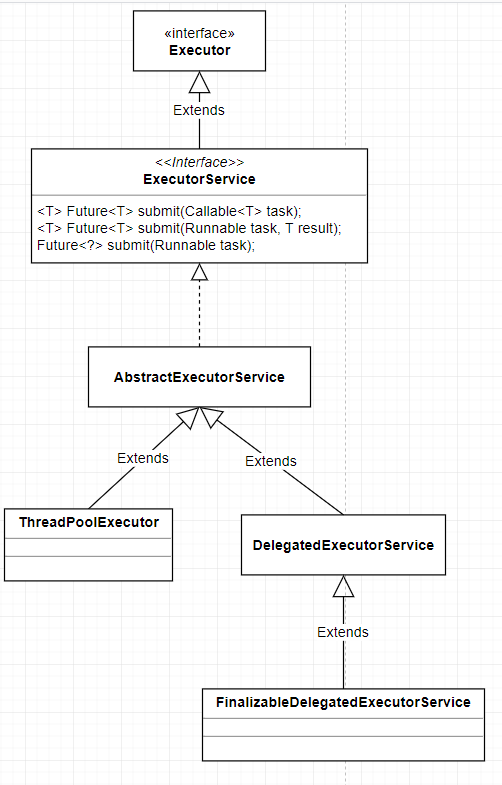多线程笔记(二)线程池 Executors
1. newSingleThreadExecutor 和 newFixedThreadPool(1) 的区别
Fixed 直接返回一个 ThreadPoolExecutor,而 Single 在 ThreadPoolExecutor 的基础上封装了 FinalizableDelegatedExecutorService,源码:
1 public static ExecutorService newSingleThreadExecutor() { 2 return new FinalizableDelegatedExecutorService 3 (new ThreadPoolExecutor(1, 1, 4 0L, TimeUnit.MILLISECONDS, 5 new LinkedBlockingQueue<Runnable>())); 6 }
在 FinalizableDelegatedExecutorService 类中重写了 Object 类的 finalize 方法,其中调用了 ExecutorService 的 shutdown 方法
1 static class FinalizableDelegatedExecutorService extends DelegatedExecutorService { 2 FinalizableDelegatedExecutorService(ExecutorService executor) { 3 super(executor); 4 } 5 protected void finalize() { 6 super.shutdown(); 7 } 8 }

ThreadPoolExecutor 中提供了对线程池进行配置的方法(setXXX),而 Single 返回的是一个 FinalizableDelegatedExecutorService 其中并没有提供配置方法,它继承的顶层接口中也没有这些方法,所以无法进行配置,所以 Single 的方法注释是这样说的:
Unlike the otherwise equivalent {@code newFixedThreadPool(1)} the returned executor is guaranteed not to be reconfigurable to use additional threads.
区别:
区别一:在垃圾回收的时候 Single 线程池相对 Fix 线程池多了一步关闭线程池,销毁线程的方法。
区别二:Fix 单线程的时候后期可以配置/更改线程池,但是 Single 不可以。
2. 使用 invokeAll 执行多个 Callable,并将结果放在一个 List<Future> 中,可以方便的使用 Lambda 表达式进行处理
demo:
1 public static void main(String[] args) throws InterruptedException { 2 ExecutorService executor = Executors.newWorkStealingPool(); 3 4 List<Callable<String>> callables = Arrays.asList( 5 () -> "task1", 6 () -> "task2", 7 () -> "task3"); 8 9 executor.invokeAll(callables) 10 .stream() 11 .map(future -> { 12 try { 13 return future.get(); 14 } catch (Exception e) { 15 throw new IllegalStateException(e); 16 } 17 }) 18 .forEach(System.out::println); 19 }
参考:


